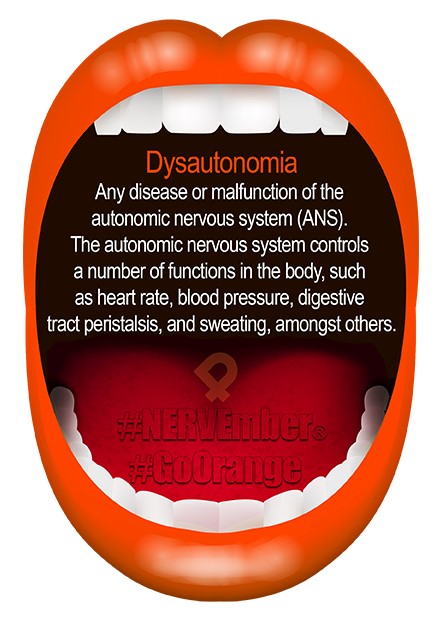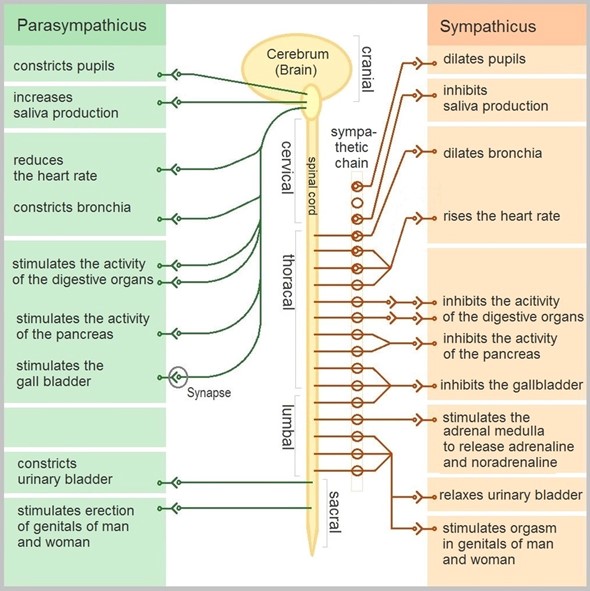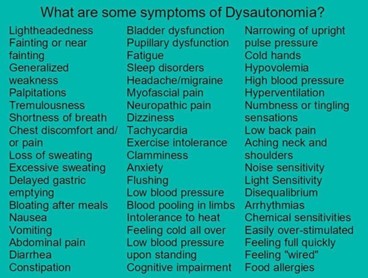Why Would a Dentist Help Treat Dysautonomia-POTS-EDS?
Dr. Roca’s daughter was diagnosed with Hyperadrenergic POTS when she was in her first year of college after years of researching trying to figure out how to tie all the symptoms that her daughter was experiencing together. In doctor visit after doctor visit, everyone would tell Dr. Roca that her daughter was perfectly healthy and it was quite frustrating to say the least. But thanks to their pure determination they found out about POTS and everything started to make sense.
The journey Dr. Roca took with her daughter is very similar to many journeys our patients have been through by the time they arrive at Arlington Smile Center. Dr. Roca has been trained in the signs that many patients have, knows that the patient may not realize how the mouth is all connected to their health.
Not all patients obviously have Dysautonomia and not all of the items in list below apply to all patients with Dysautonomia. But all the items on the list can be addressed by Dr. Roca’s treatment which may improve all the symptoms directly connected to the your Dysautonomia/EDS/ POTS diagnosis.
- Often mouth breathing is first on the list as a cause for the autonomic nervous system to always be on, alerting the flight or fight response that raises our pulse
- Having a high, arched palate
- Tongue-tie
- Tongue thrust
- Lip-tie
- Receding gums connected to EDS
- Jaw joint hypermobility connected to EDS
- Dental cavities indirectly due to the low vitamin D and mouth breathing often seen in POTS patients
- Swollen or bleeding gums
- Bad breath
- Fatigue
- Sleep disordered breathing/UARS/Sleep apnea
- Snoring or mouth breathing while sleeping
- TMJ facial tension and/or popping and clicking in jaw joint
- Speech issues
- Reverse swallowing
- Forward head posture
- Neck or traps tension (the coat hanger effect)
- Nasal congestion, allergies or asthma
- Dry mouth
- Crooked teeth
- Open bite
- Cross bite
- Receded lower jaw
- Overbite
- Insomnia
- Low levels of vitamin D and B12
- Low levels of Ferrtin connected to restless legs
- Anxiety
- Waking up at night to urinate
- Nightmares night terrors
- Wetting the bed
- Depression
- Clogged ears
- Ringing in ears
- Above normal ear infections
- Above normal sinus infections
- Eye pressure
- Vertigo
- Dizziness
- Migraines or headaches
- IBS symptoms ( constipation and diarrhea)
- Night sweating
- Thirst occurring during sleep or when you wake up
- Fibromyalgia
- Chronic Fatigue syndrome
Dr. Roca believes that through nutrition, exercise, and structural rehabilitation the body can be restored. She believes when possible that non-pharmaceutical medicine is the best medicine. She has implemented multiple insightful modalities that have proven useful in treating a number of medical conditions not commonly thought to be related to how one bites and breaths. Those include POTS, eczema, autoimmune disorders, IBS and anxiety, to name a few.
When Dr. Roca suspects the patient could have Dysautonomia-POTS-EDS, she might recommend an unofficial tilt table test to confirm her suspicions and refer you to the appropriate doctor. She does this by taking your blood pressure and pulse sitting and standing and watches your behavior in her office when it comes to breathing. She then picks one of the modalities that she thinks will help you start to heal.
Learn more about how dental health care providers can address POTS
Dr. Roca usually likes to start by teaching her patients with Dysautonomia-POTS-EDS how to properly breath through the nose, the correct tongue posture and the correct way to swallow. She has found it is very easy to use Myobrace® and myofunctional therapy to help teach these functions along with the myofunctional training she had in 2018.
And as Dr. Roca always says, one breathing method does not fit all patients! Often POTS patients find that trying to breathe increases their heart rate or causes light headedness. She needs to work with them so that they get the CO2/02 combination that is right for them.
Dr. Roca promotes individualized treatment for breathing rather than any particular dogma. She has taken a six-month mini residency integrative breathing class with Dr. Rosalba Courtney where she became a certified practitioner of Integrative Breathing Therapy, Buteyko breathing, resonance frequency breathing, capnometry, heart rate variability, biofeedback, intermittent hypoxic training, Mindful-Breath and Movement, resistance training breathing and dynamic breathing.
Another option is Alf Appliance Therapy. This therapy is ideal for those suffering from autonomic nervous system dysfunction. Many only use Alf to stimulate growth and position the maxilla for the development of a palate into the proper size and shape. At Arlington Smile Center, we have been known to use Alf not to move teeth but to calm the nervous system and encourage the tongue to assume a more normal rest posture position.
“In essence, the Alf, functions as a neurophysiologic stimulus, as an orthopedic/orthodontic device, and it encourages the tongue to assume a more normal rest posture position. The palate lies in close proximity to the brainstem and directly beneath the sella turcica, which houses the pituitary gland. This highly innervated palatal area, coupled with the proprioceptors in the tooth organs and the periodontal ligaments transmit a subtle stimulatory input not only to the roof of the mouth, but also to the brainstem and the endocrine system. More specifically, the ALF’s sensory input to the palate produces a calming effect on the sympathetic nervous system, much like the effects of a pacifier in an infant or thumb sucking in a young child. The benefit of this tranquilizing effect is that it allows the brainstem to refocus on issues other than sympathetic protection (survival).”
Sexton SM, Andrew RN, Draper L. Pacifiers Anonymous: How to Kick the Pacifier or Thumb Sucking Habit. Minneapolis, MN:Mill City Press, Inc.;2010:p85.
As Ljuba Lemke, DDS stated in one of my classes. An unnatural birth, injuries, motor vehicle accidents, concussions and other factors may have a significant influence on your brain function. Individuals who have experienced accidents, injuries or other major physical events may be stuck in dysfunctional patterns. To enjoy your best quality of life you need full brain function and activity, an accurate brain-body map and all 12 cranial nerves working harmoniously. This full-brain function affects your ability to breathe normally and helps improve the ability of your red blood cells to carry oxygen throughout your body, fueling energy production, brain power, and overall physical and mental performance.
Click here to learn more about ALF
Another appliance that can help patients in their teens and up is the Homeoblock™ appliance. You can follow this link for more information.
Another option Arlington Smile Center, uses when applicable, is Neuro-Sequencing Integration which Dr. Roca learned from by Dr. Lois Laynee. It can be a powerful adjunct to prevent, stop and even reverse the symptoms that prevent people from reaching optimal wellness and potential. After incorporating Lois Laynee’s Cranial Neurosequencing Technique for TMD, Sleep Disorders, Fibromyalgia and Airway Orthodontics, Dr. Roca saw changes in patients who reported faster reduction of pain, better breathing decreased anxiety.
- Olfactory Nerve: Sense of smell
- Optic Nerve: Vision
- Oculomotor Nerve: Eyeball and eyelid movement
- Trochlear Nerve: Eye movement
- Trigeminal Nerve: Facial sensation and chewing; this nerve is divided into three branches – the ophthalmic, maxillary and mandibular nerves.
- Abducens Nerve: Eye movement
- Facial Nerve: Facial expressions and sense of taste
- Vestibulocochlear Nerve: Equilibrium and hearing
- Glossopharyngeal Nerve: Swallowing, sense of taste and saliva secretion
- Vagus Nerve: Smooth muscle sensory and motor control in throat, lungs, heart and digestive system
- Accessory Nerve: Movement of neck and shoulders
- Hypoglossal Nerve: Movement of tongue, swallowing and speech


